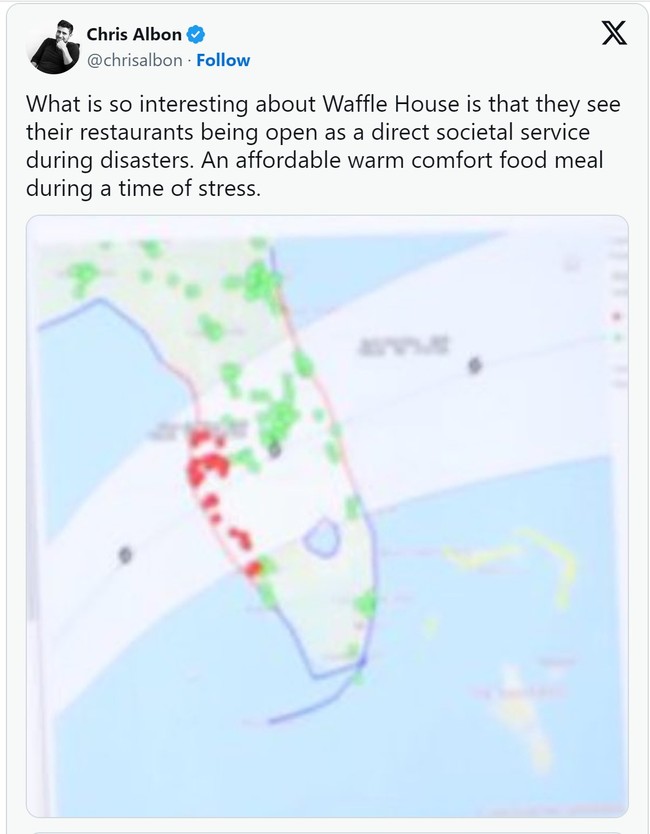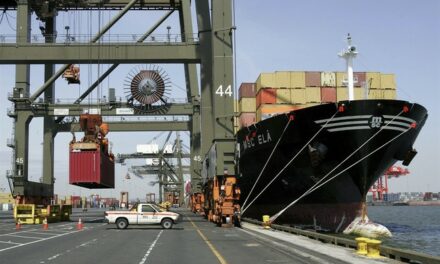We support our Publishers and Content Creators. You can view this story on their website by CLICKING HERE.
There are some things I missed spending my formative years in the Appalachian mountains in New Jersey. And, yes – there are ‘mountains’ in NJ, even ski areas. The particular one we lived on top of, which all those years ago was pretty isolated, had been tapped at about 1200′ in height or so by the altimeter in my Daddy’s Eastern Airlines Electra when he rumbled over the homestead one day on his way back to Newark with an empty plane.
Advertisement
Sussex County at the time was rural with a capital ‘R’ and not known for any regional culinary specialty, less mind any dining chain establishment of any description. The closest we came to meeting the NJ mold was an affection for Taylor pork roll (ROLL – it says so on the label, dammit) and…well, a pizza parlor opened by Italian refugees from closer to the city who’d needed to establish some distance from, let’s just say, a ‘family’ feud.
All those ‘New Jersey’ icons like Wawas, fried hotdogs, etc might as well have existed in a different universe to the agrarian natives of the area then. The Sussex Diner and spaghetti with meatballs bigger than your head on Wednesdays was the go-to place.
In California, it was different, with everyone developing crushes on Del Taco or Taco Bell—huge arguments. Tommy Burgers or In-N-Out (no question there—double-double with grilled onions and fries). Late-night rabble-rousing was never a chain – always Tiny Naylor’s on Red Hill in Tustin.
It wasn’t until we hit the South that we became aware of the ultimate ubiquitous meeting and eating “place.” That yellow jacket combination of bright yellow and black sign rising above an interstate on a 150-foot-tall pole or shimmering in the fog on a backcountry Carolina or Panhandle road.
The Waffle House.
They were everywhere. ARE everywhere, and everyone loves them.
Here in Pensacola, I counted roughly 16 on a Google map search within what we consider the Pensacola area. That’s before it stretches out to the wilds of the back county. And you know they have them, too – never you doubt it.
Advertisement
Waffle Houses are legendary. There’s one here that I was told years ago, if a person ever wanted to see every manner of human being and social strata in one place, stop at the Waffle House up by the interstate or the one on Gregory ’round about 2 am. Guaranteed, the world in all its glory will be there.
Our Ebola* in his salad days would regularly wind up at the Gregory Street Waffle House in the wee hours. Oh, he mourned mightily from overseas when we had to tell him they were discontinuing the t-bone steak he used to order when his wallet was heavier than usual.
Seriously – a t-bone that was edible and affordable. Or settling for a cup of good coffee.
In a place that feels the same comfy place no matter where it is.
“Is the Waffle House universally awesome? It is indeed, marvelous, an irony-free zone where everything is beautiful and nothing hurts; where everybody, regardless of race, creed, color, or degree of inebriation, is welcomed—its warm yellow glow a beacon of hope and salvation, inviting the hungry, the lost, the seriously hammered all across the South to come inside. A place of safety and nourishment. It never closes, it is always faithful, always there for you.” ~ Tony Bourdain
Waffle House rules the Southern world. They are always here for you.
But you’d best listen up if they are not.
Folks, if Waffle House is closing, you know this is a big deal. https://t.co/6MWEGACJTR
— Rep. Nancy Mace (@RepNancyMace) October 8, 2024
Advertisement
One of the most amazing things to come out of these two horrific storms is that Waffle House has been revealed for what it truly is.
Beneath all the homespun charm, greasy eggs, and TikTok video eat-in counter fights, they are an efficiency machine that blows the doors off the government.
Behold the wizards who are so good at what they do. FEMA and others consult with them.
Waffle House has a Storm Center with an entire operations team that is so good at their job they assist FEMA during hurricanes.
The European mind cannot comprehend this pic.twitter.com/Wfmw5hPzzC
— Alex Cohen (@anothercohen) October 9, 2024
Oh, yeah, they do.
Today I had the opportunity to visit the @WaffleHouse Storm Center as we continue to recover from Hurricane Helene and prepare for Hurricane Milton. Thank you to the Waffle House Operations Team for your great work to prepare and inform the public during times like this. pic.twitter.com/gIBA3onKcl
— Governor Brian P. Kemp (@GovKemp) October 8, 2024
In fact, their disaster response team uses an index that was initially conceived and designed by a former FEMA director who, unlike what we’ve been burdened with lately, apparently took his job seriously and knew his stuff.
Waffle House Hurricane Response
The Waffle House is a restaurant based in Georgia which has been recognized by the Federal Emergency Management Agency (FEMA) for its exceptional preparedness during hurricanes, ready to serve customers and first responders. Their preparedness is effective and reliable enough that they are (along with a few other companies) used by FEMA as an informal metric called the Waffle House Index to determine how badly a storm has affected a given area.
Results
Providing Resources During Recovery
Because of its level of preparedness, Waffle House is able to provide a place for residents to charge their phones and provide food to first responders in the aftermath of a storm.
Waffle House supports its locations by monitoring storms at the Waffle House Storm Center. Waffle House locations are able to operate on gas alone, though they sometimes bring in electric generators. The company also mobilizes “jump teams”: people who come from other parts of the United States to cover for employees who are unable to report to work because of the storm. Finally, they prepare to reduce to a limited menu under circumstances in which some of their supplies are difficult to obtain.
Wider Disaster Coordination
The Waffle House Index, devised in 2004 by former FEMA Director Craig Fugate, uses a color code to indicate the status of each restaurant. Green indicates that a restaurant is fully operational. Yellow indicates limited menu, gas power, or no power. Red indicates that it is closed. A closed location indicates a very severe situation. FEMA uses this index to determine how quickly businesses will rebound as well as how the wider community is doing.
Advertisement
The Waffle House Index is a thang:
…Dan Stoneking, FEMA director of external affairs, wrote in a FEMA blog post:[12][13]
As Craig [Fugate] often says, the Waffle House test doesn’t just tell us how quickly a business might rebound – it also tells us how the larger community is faring. The sooner restaurants, grocery and corner stores, or banks can re-open, the sooner local economies will start generating revenue again – signaling a stronger recovery for that community. The success of the private sector in preparing for and weathering disasters is essential to a community’s ability to recover in the long run.
— Dan Stoneking, FEMA News of the Day – What do Waffle Houses Have to Do with Risk Management?
And they are all in on getting the restaurants up and operational as quickly as possible after a storm because the priority is what’s most important for the community, not what the chain needs.

It’s no wonder some people have stars in their eyes about Waffle House, like Ebola when he was young, the sweet older couples I see eating there every Sunday after church, the young carousers slumped in booths, and everyone in between.
People like my friend Matt, who immortalized his Waffle House love in one of the prettiest paintings I’ve ever seen.
Next week I’m going to have to pause my printing of all of my art prints temporarily. I will be in search for a new printer. In the meantime they are still up. And originals are always available. https://t.co/RiYPOfodRf pic.twitter.com/tnb8ZhDaAx
— Matt Dawson (@SaintRPh) October 9, 2024
Advertisement
It only goes to show you how great this country is. Our heroes not only don’t have capes; some wear uniforms or everyday clothes, and they come in all shapes and sizes and from all walks of life.
And you find them in the last place you’d expect.
Wearing yellow and black, with two over-easy and a side of hash browns.
*Our son was one of the very first computer and gaming savants in the early 90s, winning tournaments and designing “skins” for games not long after AL Gore invented the innerwebs. Unfortunately, he also had a knack for catching the first viruses. One was so virulent that it wiped his computer and all of my work and required one of his father’s computer geeks to come from base with a DoD program to finally exterminate it. His uncle Bingley nicknamed him “Ebola,” and it has been his nom-de-innerwebs ever since.

 Conservative
Conservative  Search
Search Trending
Trending Current News
Current News 







